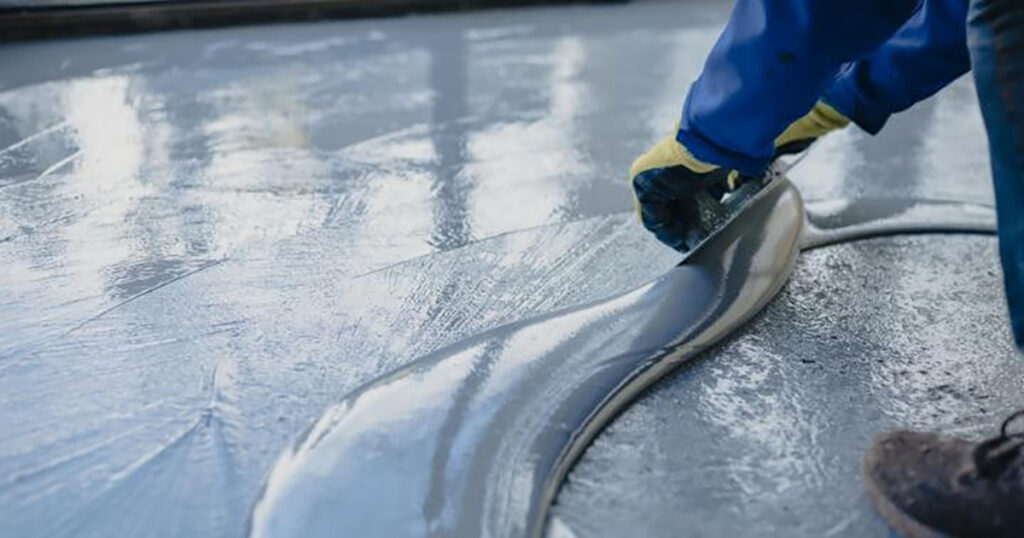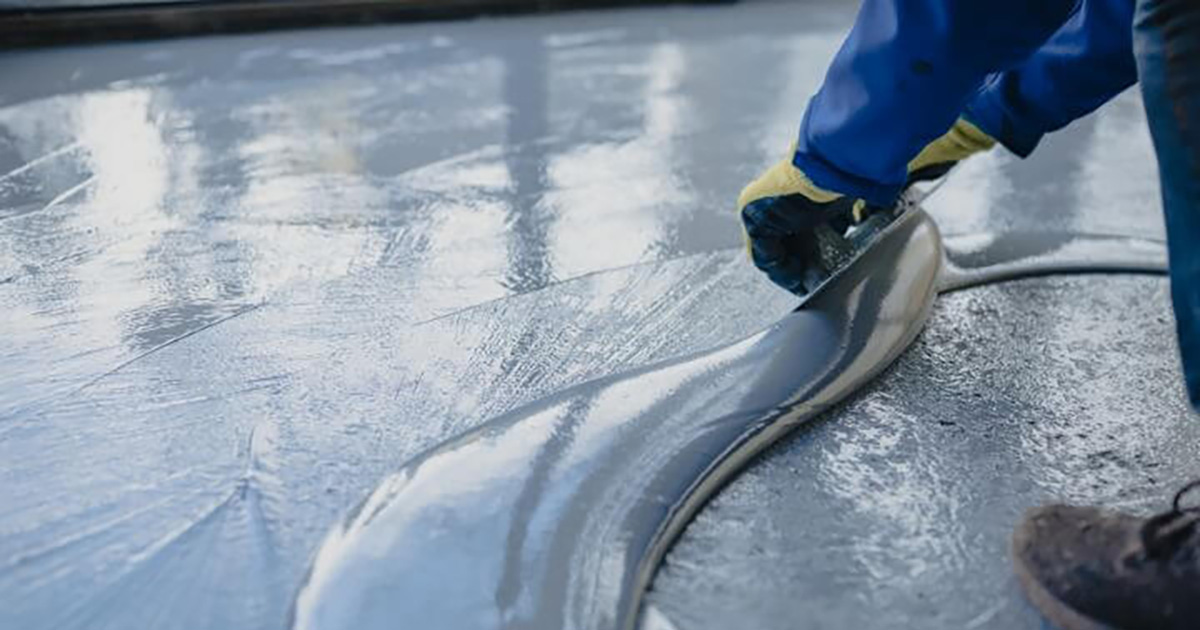Epoxy coatings, while popular for their durability and glossy finish, come with a set of drawbacks that can impact their overall effectiveness and suitability for certain applications. For those navigating through these challenges, LYNX Concrete Coatings provides stellar concrete coatings services with an expert touch. This article aims to shed light on these potential pitfalls, providing valuable insights for businesses considering the use of epoxy coatings. From initial costs to environmental concerns, we will delve into the various aspects that might make you reconsider your decision.
Understanding the Drawbacks of Using Epoxy Coatings
Epoxy coatings are often a go-to choice for concrete flooring due to their impressive durability and aesthetic appeal. However, like any product, they are not without their disadvantages. This article aims to shed light on the potential challenges you may face when opting for epoxy coatings. We will delve into the high initial cost, installation difficulties, maintenance demands, environmental and health impacts, and safety and aesthetic limitations. Our goal is to equip you with the knowledge you need to make a well-informed decision that aligns with your specific needs and circumstances.
The High Initial Cost of Epoxy Coatings
While the durability and visual appeal of epoxy floor coatings may be enticing, it’s crucial to consider the substantial initial investment associated with them. The cost of high-quality epoxy products, professional installation fees, and potential floor repair or preparation before application all contribute to this initial outlay.
For instance, if the pre-installation process uncovers unexpected issues like high moisture content in the concrete, you may face additional costs for remediation. Moreover, the application of epoxy coatings typically requires a certain level of expertise, often leading to the need for hiring trained professionals. This cost can fluctuate based on factors such as the size of the area to be coated and the specific conditions of the concrete floor.
In essence, while epoxy floor coatings offer a sturdy and long-lasting solution, their high initial cost can be a significant deterrent for those on a tight budget.
Challenges with Installation and Durability of Epoxy Coatings
Epoxy coatings are known for their protective and aesthetic qualities. However, achieving these benefits is contingent on a meticulous installation process. Concrete surfaces must be immaculate, devoid of oil, grease, or remnants of prior coatings. Any oversight in this preparatory phase can result in blemishes such as bubbles or blisters, or even a failure in the coating’s adhesion to the concrete.
The curing process of epoxy, the chemical reaction that solidifies the coating, is another potential pitfall. It demands strict control over humidity and temperature. Any deviation from the ideal conditions can lead to a subpar finish or a weakened coating. In colder climates, for instance, the epoxy might not solidify as it should, while excessive humidity can impede the curing process.
Epoxy’s rigid nature can also pose a problem. While it’s a robust coating, it may not be the best choice for floors that bear heavy loads or are subject to shocks. The rigidity of epoxy makes it susceptible to cracking under pressure. Additionally, prolonged exposure to ultraviolet (UV) rays can cause the coating to discolor, diminishing its aesthetic value.
Despite the renowned durability of epoxy coatings, these installation challenges and potential long-term issues can be significant deterrents for some users.
Maintenance Requirements for Epoxy Coatings
Epoxy coatings are praised for their durability, but they are not entirely self-sustaining. To maintain their glossy appearance and prolong their lifespan, a consistent cleaning routine is necessary. Over time, dust, dirt, and grime can build up, necessitating regular sweeping or mopping.
In high-traffic areas or where heavy machinery is used, the epoxy floors may show signs of wear. The surface can be scratched by sharp or heavy objects, and harsh cleaners or chemicals can degrade the coating. This makes the floor more prone to stains and damage. Regular inspections can help identify these issues early, but they add to the time and effort needed for maintenance.
Any damage, such as cracks or chips caused by impacts or load stresses, must be repaired promptly to prevent further deterioration of the epoxy layer. Depending on the severity of the damage, professional intervention may be necessary, adding to the maintenance cost.
Moreover, to shield the floor from UV rays that can cause discoloration, additional UV protective coatings may be needed, particularly for floors exposed to constant sunlight. This adds another dimension to the maintenance of epoxy applications.
While epoxy coatings offer undeniable benefits in terms of aesthetics and durability, their considerable maintenance needs could be a drawback for some users.
Environmental and Health Concerns of Epoxy Coatings
Epoxy coatings, while offering a plethora of benefits, do present certain environmental and health-related challenges. These issues stem from the non-recyclable nature of epoxy and the potential for harmful emissions or health risks due to its chemical composition. The following sections will provide a more in-depth examination of these concerns, shedding light on the potential environmental and health implications of using epoxy coatings.
Non-recyclable Nature of Epoxy Coatings
Despite the high praise for their durability and protective qualities, epoxy coatings do have a significant environmental shortcoming – they are not recyclable.
Epoxy resin, once cured, transforms into a non-reversible polymer, a consequence of its thermosetting properties. This means that once an epoxy floor has served its purpose, it cannot be repurposed or recycled into a new product. Instead, it must be discarded as waste. This not only poses a challenge for those seeking to minimize their environmental footprint, but also contributes to the growing issue of landfill waste.
Furthermore, the process of removing epoxy coatings is often complex, labor-intensive, and potentially expensive. It typically requires the use of heavy machinery and abrasive tools to effectively remove the coating. The waste produced during this process, if not properly managed, can contribute to environmental pollution.
These factors raise questions about the sustainability of epoxy coatings, making them a less appealing choice for those who prioritize environmental responsibility.
Potential for Harmful Emissions and Health Risks
Epoxy coatings, while offering a robust and glossy finish, carry with them a significant environmental and health concern: the release of harmful emissions. The chemical reaction that occurs when an epoxy resin and a hardener are combined to form this coating can lead to the emission of Volatile Organic Compounds (VOCs) during the curing process.
Exposure to these VOCs can result in immediate health effects, including headaches, dizziness, skin irritation, and nausea. Prolonged exposure may even lead to more severe health problems such as liver or kidney damage and certain types of cancer.
The installation process of epoxy coatings also presents health risks. The mixing of the resin and hardener should be carried out in a well-ventilated area and ideally while wearing protective gear to prevent skin or eye contact or inhalation, which can cause immediate discomfort.
Moreover, the release of these VOCs contributes to air pollution, a significant issue considering that indoor air can often be more polluted than outdoor air. As such, it’s crucial to consider these potential health and environmental risks when deciding to use epoxy coatings in residential, commercial, or industrial settings. Being aware of these risks can guide informed decisions and ensure necessary precautions are taken.
Safety and Aesthetic Limitations of Epoxy Coatings
In addition to the financial, maintenance, and environmental considerations, there are safety and aesthetic factors to weigh when considering epoxy coatings. Notably, these coatings can become slippery when wet, posing a potential safety hazard. Additionally, there are design limitations to consider, including a limited variety of options and the potential for discoloration over time.
The following sections will delve into these safety and aesthetic limitations in more detail, providing a comprehensive understanding of the potential drawbacks of using epoxy as a concrete floor coating solution. This knowledge can help guide decisions and ensure that the chosen solution meets all needs and expectations.
Slippery When Wet
Epoxy floor coatings, while aesthetically pleasing and easy to maintain, present a significant safety concern due to their slickness in wet conditions. The glossy finish, although attractive, unfortunately, diminishes traction when moisture is present, creating a potential hazard in both residential and commercial settings.
This safety concern is particularly relevant in areas frequently exposed to moisture, such as industrial spaces, kitchens, or bathrooms. Similarly, locations prone to spills, such as garages where oil or other fluids may be present, also face an increased risk of slips and falls.
While some epoxy products may include additives to enhance traction in wet conditions, these do not entirely mitigate the issue. Furthermore, these additives can alter the final appearance of the coating, creating a trade-off between maintaining the desired glossy finish and ensuring safety.
Moreover, these traction-enhancing additives may degrade over time, gradually reverting the floor to its original slippery state. Therefore, the safety of epoxy coatings in wet conditions is a significant consideration for potential users.
Design Limitations: Limited Variety and Potential for Discoloration
Epoxy floor coatings, despite their durability and initial appeal, present certain aesthetic limitations. Firstly, they offer a limited range of textures and designs compared to other flooring options. While a variety of colors may be available, the customization of designs can be challenging, potentially hindering those seeking a specific look or finish.
Secondly, epoxy coatings are prone to discoloration over time. Despite their resistance to mechanical wear, exposure to ultraviolet (UV) rays can cause these coatings to yellow or fade. This can be a significant issue in spaces where the floor is exposed to direct sunlight, affecting the overall aesthetic appeal of the coating over time.
UV-resistant epoxy coatings are available to combat this issue, but they often come at a higher cost and may not entirely prevent color changes. This adds another layer of cost and reliability considerations for potential users. Therefore, while epoxy coatings may initially seem attractive and durable, their long-term aesthetic appeal can be compromised by a limited design variety and potential for discoloration.
1. What are some common disadvantages of Epoxy coatings?
Epoxy coatings often require a meticulous application process. If not properly applied, the result can be a surface prone to peeling and bubbles. Moreover, once hardened, these coatings cannot tolerate extreme heat.
2. Why does color fading occur in Epoxy coatings?
Continuous or intense exposure to ultraviolet (UV) radiation can lead to Epoxy coatings fading or yellowing over time. Unfortunately, this makes these coatings unsuitable for outdoor usage where UV exposure is unavoidable.
3. How does temperature affect the performance of Epoxy coatings?
Epoxy coatings are typically not thermally stable. When exposed to high temperatures, their visual appeal can deteriorate, showing signs of discoloration or areas of chalking.
4. Are Epoxy coatings considered as environmentally friendly?
Epoxy resins, essential components of Epoxy coatings, can be harmful to the environment. When curing, these coatings can emit Volatile Organic Compounds (VOCs), contributing to air pollution.
5. How does moisture impact the application of Epoxy coatings?
The presence of moisture during application can hamper the bonding of Epoxy coatings, leading to weak or unsuccessful adhesion. This results in peeling and may require a total redo of the coating process.
6. Are there any allergy-related issues linked with Epoxy coatings?
Yes. Direct contact with Epoxy coatings can cause allergic reactions in some individuals, and overexposure can even lead to sensitization. Appropriate personal protective equipment is required during the application process.



